Despite widespread commitments to protect labour rights, violations like retaliation for organizing or restrictions on collective bargaining remain common. These are more than legal infractions – they are structural barriers to decent work, social justice, and inclusive economic growth. Tracking how countries uphold these rights is essential to safeguarding fundamental labour rights, promoting accountability and ensuring progress toward effective and inclusive governance of work.
As part of Target 8.8 of the Sustainable Development Goals (SDGs), which aims to protect labour rights and promote safe and secure working environments for all workers, indicator 8.8.2 was introduced. The indicator measures country level compliance with two ILO fundamental labour Conventions: Convention No. 87 on Freedom of Association and Protection of the Right to Organize (1948) and Convention No. 98 on Right to Organize and Collective Bargaining (1949).
The principles of freedom of association and the effective recognition of the right to collective bargaining (FACB) have long been essential to the ILO’s normative foundations and agenda. As human rights and the cornerstone of democracy, FACB rights are vital in enabling employers and workers to associate and they lay the foundation upon which employers, employers’ organizations and trade unions can contribute to the effective and inclusive governance of work. They are rights and enabling conditions holding particular significance when it comes to achieving social justice and decent work and play a fundamental role in the realization of many of the SDGs, including Goals 8 (decent work), 10 (reduced inequalities) and 16 (peace, justice, and strong institutions).
How compliance with FACB rights is measured?
SDG indicator 8.8.2 is based on the coding of selected reports produced by the ILO’s unique supervisory system, as well as national legislation for those countries that have not ratified either or both ILO Conventions 87 and 98. The underlying methodology is based on three key premises: definitional validity, reproducibility, and transparency. Through the careful coding of instances of non-compliance identified by the ILO’s supervisory bodies, the indicator is an important tool in clarifying and deepening the understanding of existing violations in both law and practice, as well as related trends over time.
The indicator ranges between 0 to 10, with 0 being the best possible score (indicating higher levels of compliance with FACB rights) and 10 the worst (indicating lower levels of compliance with FACB rights). It is reported annually for all ILO Member States, currently 187 countries. Given that the statistical foundations of the indicator are ILO textual sources which are themselves based on information provided by Governments and workers’ and employers’ organizations, both the data collection and reporting of the indicator is carried out by the ILO, as opposed to most other SDG indicators where it is done by the countries themselves.
What does the data show about the level of compliance with FACB rights?
The global average for SDG indicator 8.8.2, weighted by ILO labour force estimates, stood at 4.86 in 2023, marking a significant (7.0 per cent) deterioration since 2015, when it stood at 4.54.
The ILO submits the weighted global and regional averages to the UN. The weighted average better depicts changes in FACB rights violations accounting for the size of the workforce impacted by those, giving more weight to larger countries. Yet the simple, unweighted average can provide a better picture of trends with respect to the number and severity of violations.
Looking at the weighted averages, while the value of the global weighted average deteriorated by only 0.03 from 2022 to 2023, compared with the change of 0.29 from 2021 to 2022, this was mostly due to the little or no change of the scores in countries with the largest labour forces (particularly China, India and Indonesia). The deterioration in the simple, unweighted average has, however, not only been steadier since 2020, but was also larger from 2022 to 2023 (0.12) than from 2021 to 2022 (0.07). Another way of looking at trends in FACB rights is that from 2020 to 2023, respect for these rights worsened in close to 40 per cent of ILO member States while it improved in only 15 per cent of them.1For 46 per cent of the countries the scores remained the same. However, many of the countries where the scores remained unchanged are also among the countries where the scores should be treated with care due to the possibility of insufficient information. For these countries the scores are published and reported with the following note: “The score should be treated with care due to the possibility of insufficient information in the textual sources, based on comparison with an externally produced indicator (see Metadata, point 4.f.)”.
The region with the highest (i.e. worst) weighted averages in 2023 is Asia and the Pacific (6.48), with the Arab States (5.97) being next. The data also indicates, however, that the deterioration concerns not only least developed and developing countries but also developed countries. The largest increase from 2015 to 2023 occurred in Least Developed Countries (with a year-to-year change of 1.3), the Americas (0.54) and Europe and Central Asia (0.51).
How to use SDG indicator 8.8.2?
When using the indicator, it is important to consider that its primary purpose is to measure progress within countries over time rather than to compare across countries. To make sense of the country scores, it is useful to see how they compare to the world and regional averages, where they fall within the overall distribution of the scores and what types of non-compliance underlie the country level indicators.
Regarding the distribution of the scores, for the period of 2015-2023 on average, about 7 per cent of all ILO member States received a score of 0 and 53 per cent received scores between 0 and 2. Around 13 per cent of countries received score between 2 and 3, while there is a fairly steady decline in the share of countries in the scoring bands above 3.
As noted, a key premise behind the methodology is transparency. A dedicated page, with over twenty thousands data points, allows users to readily access all instances of coded non-compliance (down to the actual paragraph where the violation is identified) in a searchable dataset that allows the filtering of the violations by year, country, type of organization (i.e. workers’ and/or employers’ organization), textual source, and type of violation. With respect to the types of violations, an important aspect is the distinction between in law and in practice non-compliances. The rationale for this distinction is to understand whether non-compliance results from the legislative framework or rather results from the lack of implementation and enforcement of laws that are (largely) in compliance with ILO Conventions 87 and 98.
The majority of instances of non-compliance identified by the ILO supervisory bodies concern laws. However, the trends in the coded violations show that since 2020, the increase in the total number of violations has been driven by the increase in the number of violations in practice, indicating an erosion of the protection afforded to employers’ and workers’ organizations under the national laws on FACB rights.
As countries consider ways that progress on FACB rights can be achieved, the indicator and the underlying coding can provide an important baseline on the issues that can be addressed through close collaboration with the ILO supervisory bodies and mechanisms. When Member States, with the involvement of the social partners, either decide to ratify Convention 87 and or 98 or follow up on the various observations and recommendations made by the supervisory bodies, those changes will also be reflected in their scores under SDG indicator 8.8.2 signalling a strong commitment to the attainment of the SDGs, decent work and social justice.
Authors
-

Dora Sari
Dora is a Specialist on Industrial Relations Indicators in the Rights, Migration and Skills Statistics Unit of the ILO Department of Statistics.
View all posts -

